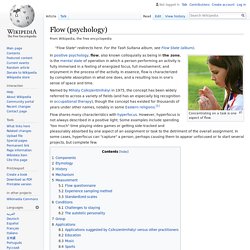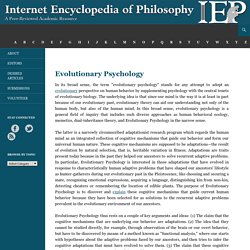

Gmail: correo electrónico y almacenamiento gratuitos de Google. How to Stay Calm in a Raging World: Observing our Anger. This article was adapted from psychotherapist and meditation instructor Mindy Newman’s lecture at the Night of Philosophy and Ideas, a dusk-to-dawn marathon of philosophical discussions and events at the Brooklyn Public Library on February 2, 2019.

Newman’s talk was part of a Tricycle series that presented perspectives from Buddhist thinkers and scholars. How do we stay calm in a raging world? Most of us think that we need the world around us to change in order for us to change. We think that if the people in our life were more responsive to us or if politicians were thinking about things in the right way or doing the things we wanted we wouldn’t have to be so angry. But from the perspective of Buddhism, staying calm comes from healing our own anger. A guide to twim. Historical Background of Buddhism.
Associaitons, groupes. Données scientifiques. Flow (psychology) Concentrating on a task is one aspect of flow.

In positive psychology, flow, also known colloquially as being in the zone, is the mental state of operation in which a person performing an activity is fully immersed in a feeling of energized focus, full involvement, and enjoyment in the process of the activity. In essence, flow is characterized by complete absorption in what one does, and a resulting loss in one's sense of space and time. Flow shares many characteristics with hyperfocus. However, hyperfocus is not always described in a positive light. Some examples include spending "too much" time playing video games or getting side-tracked and pleasurably absorbed by one aspect of an assignment or task to the detriment of the overall assignment.
Just as with the conditions listed above, these conditions can be independent of one another. Ideas similar to flow have been recognized throughout history and across cultures. Schaffer (2013) proposed 7 flow conditions: Les Yoga sutras de Patanjali. Tous les articles En 195 sutras, ou petits versets, le sage Patanjali décrit le fonctionnement du mental, et indique différentes manières d'appréhender le yoga, et de l'intégrer dans notre vie.

C'est l'œuvre de référence du yoga. Elle date d’environ 200 ans av J.C. Ces 195 sutras sont organisés en 'padas', ou chapitres, comme suit : Samadhi Pada définit le yoga, la pratique, les problèmes que nous pouvons rencontrer et leurs solutions,Sadhana Pada explique comment développer l'attention, en opposition à l'état de distraction dans lequel nous vivons,Vibhuti Pada nous guide vers la pratique combinée de la concentration et la contemplation pour atteindre un état d'unité et développer une attention de plus en plus profonde.Kaivalya Pada, le dernier chapitre, révèle l'objectif du Yoga : maîtriser l'esprit, développer une perception claire et se libérer de tout attachement.
Kundalini Experiences, Kundalini Awakening, Kundalini Raising, Yoga, Brahmajnana: Medha Nadi, Medha Nadi Activation, Medha Nadi Awakening, Meditation, Meditation Experience, Medhita, Spirituality, Sphurita, English/Other Language Words Dervied From Sanskr. A word has many meanings.

It can be used in various contexts to mean many different things. In this post, I have chosen some important Sanskrit words which may help you understand the origin of meditation and spirituality.Believe it or not: More than 60% of word roots of English are from Greek and Latin and 90% of English scientific terms are from Greek. You need to Google and find out. Some say it is 56% and some say it is more than 80-90% of English words in the dictionary are from other languages.
Meditation and SPIRITuality terms of Greek and Latin are derived from the Indian language Sanskrit including the words 'meditation' and 'spirit/spirituality.' People who read meditation and spiritual books written in English or written by foreign authors are bound to misunderstand not only the terms "meditation & spirituality" but also many or all other terms associated with them due to wrong translation, misinterpretation, or misunderstanding by the writers/authors/translators.
Meditation: The Tibetan Book of the Dead and Near-Death Experiences. Internet Encyclopedia of Philosophy. In its broad sense, the term "evolutionary psychology" stands for any attempt to adopt an evolutionary perspective on human behavior by supplementing psychology with the central tenets of evolutionary biology.

The underlying idea is that since our mind is the way it is at least in part because of our evolutionary past, evolutionary theory can aid our understanding not only of the human body, but also of the human mind. In this broad sense, evolutionary psychology is a general field of inquiry that includes such diverse approaches as human behavioral ecology, memetics, dual-inheritance theory, and Evolutionary Psychology in the narrow sense. The latter is a narrowly circumscribed adaptationist research program which regards the human mind as an integrated collection of cognitive mechanisms that guide our behavior and form our universal human nature. Table of Contents 1. Evolutionary Psychology is effectively a theory about How the Mind Works (Pinker 1997). A. B. C. 2. A. B. C. D. E. 3. What is Theravada Buddhism? Kundalini Experiences, Kundalini Awakening, Kundalini Raising, Yoga, Brahmajnana: Kundalini Myths, Chakra Myths, Kundalini as it is, Kundalini Rahasya, Kundalini Secrets, Chakra Secrets, Self-realization secrets, Enlightenment secrets.
Basics: Kundalini is the power responsible for our breathing, without which we are all dead as a dodo.

Kundalini is also the power that is responsible for SPIRITual awakening, SPIRITual knowledge, loosening the knots of the SPIRITual heart, and Enlightenment. In the above picture, the two snakes represent DNA. The two snakes also represent Ida and Pingala nerves or nerve channels (responsible for our breathing) which are connected to our left and right nostrils through which we breathe in and breathe out.
The middle staff/rod (Meru Danda) is the Sushumna (ethereal/spiritual nerve channel responsible for SPIRITual awakening/knowledge). The head of the staff is Sahasrara and the wings represent freedom/liberation/enlightenment/Nirvana/Kaivalya. Book. Vipassana Meditation and Body Sensation: Eilona Ariel at TEDxJaffa 2013. Your mind is the source of all your sorrow and joy. Conférence Matthieu Ricard et Christophe André - Animée par Guillaume Decitre.
Dada Gunamuktananda. Your brain hallucinates your conscious reality. Wim Hof The Iceman Demonstrates His Breathing Technique with Lewis Howes. The brain is our last frontier and consciousness is expanding. Conscience. TEDxCambridge - Sara Lazar on how meditation can reshape our brains. Unwavering Focus.